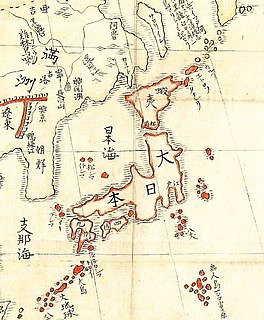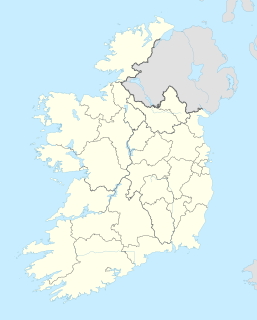Related Research Articles

A kurgan is a type of tumulus constructed over a grave, often characterized by containing a single human body along with grave vessels, weapons and horses. Originally in use on the Pontic-Caspian steppe, kurgans spread into much of Central Asia and Eastern, Western and Northern Europe during the 3rd millennium BC.

A tumulus is a mound of earth and stones raised over a grave or graves. Tumuli are also known as barrows, burial mounds or kurgans, and may be found throughout much of the world. A cairn, which is a mound of stones built for various purposes, may also originally have been a tumulus.

Teppe Hasanlu or Tappeh Hassanlu is an archeological site of an ancient city located in northwest Iran, a short distance south of Lake Urmia. The nature of its destruction at the end of the 9th century BC essentially froze one layer of the city in time, providing researchers with extremely well preserved buildings, artifacts, and skeletal remains from the victims and enemy combatants of the attack. In Persian, teppe means "tell, hill".

Lovas is a village and seat of municipality in the Vukovar-Syrmia County of eastern Croatia, located on the slopes of Fruška Gora, a few kilometers south of the main road connecting Vukovar with Ilok. Lovas has a population of 1,214 (2011), and its municipality also includes the smaller village of Opatovac which is located to the north, at the Danube. Lovas is underdeveloped municipality which is statistically classified as the First Category Area of Special State Concern by the Government of Croatia.

Yoshinogari is the name of a large and complex Yayoi archaeological site in Yoshinogari and Kanzaki in Saga Prefecture, Kyūshū, Japan. According to the Yayoi chronology established by pottery seriations in the 20th century, Yoshinogari dates to between the 3rd century BC and the 3rd century AD. However, recent attempts to use absolute dating methods such as AMS radiocarbon dating have shown that the earliest Yayoi component of Yoshinogari dates to before 400 BC.

The European Bronze Age is characterized by bronze artifacts and the use of bronze implements. The regional Bronze Age succeeds the Neolithic. It starts with the Aegean Bronze Age in 3200 BC (succeeded by the Beaker culture), and spans the entire 2nd millennium BC in Northern Europe, lasting until c. 600 BC.

Shimal is the name of a settlement in Ras Al Khaimah associated with the Shihuh tribe of the Northern UAE and Oman. It is also the location of an important archaeological site dating back to the Umm Al Nar culture. Tombs excavated and surveyed at Shimal include both the round Umm Al Nar type and the barrow tombs typical of the 'Wadi Suq' era. Grave goods found at Shimal have included large finds of pottery as well as beads and objects providing a link to the Harappan Indus Valley Civilisation.

Leary Site, also known as 25-RH-1 or Leary-Kelly Site is an archaeological site near Rulo, Nebraska and the Big Nemaha River. The site now lies entirely on the reservation of the Iowa Tribe of Kansas and Nebraska. The area was once a village and burial site.

Farmana Khas or Daksh Khera is an archaeological site in Meham block of Rohtak district in northern Indian state of Haryana spread over 18.5 hectares. It is located near the village of Farmana Khas, about 15 kilometers from the Rohtak-Hissar highway and 60 kilometres from Delhi. It is significant particularly for its burial site, with 70 burials, of the Mature Harappan period (2500–2000 BC) and fairly recent addition to Indus Valley Civilisation sites excavated in India.

Burrough Hill is an Iron Age hillfort in Burrough on the Hill, 7 miles (11 km) south of Melton Mowbray in the English county of Leicestershire. Situated on a promontory about 210 metres (690 ft) above sea level, the site commands views over the surrounding countryside for miles around. There has been human activity in the area since at least the Mesolithic, and the hillfort was founded in the early Iron Age. In the medieval period, after the hillfort was abandoned, the hill was used as farmland. This ended in the 17th century when the parish the hill was in was enclosed. Traces of ridge and furrow show where the medieval fields were ploughed. Since the 1930s the site has been the subject of archaeological investigations and renewed excavations under the auspices of the University of Leicester began in 2010. Part of Burrough Hill Country Park and open to the public, the hillfort is protected as a Scheduled Ancient Monument.

The Shengavit Settlement is an archaeological site in present-day Yerevan, Armenia located on a hill south-east of Yerevan Lake. It was inhabited during a series of settlement phases from approximately 3000 BC cal to 2500 BC cal in the Kura Araxes (Shengavitian) Period of the Early Bronze Age and irregularly re-used in the Middle Bronze Age until 2200 BC cal. The town occupied an area of six hectares. It appears that Shengavit was a societal center for the areas surrounding the town due to its unusual size, evidence of surplus production of grains, and metallurgy, as well as its monumental 4 meter wide stone wall. Three smaller village sites of Moukhannat Tepe, Khorumbulagh, and Tairov have been identified and were located outside the walls of Shengavit. Its pottery makes it a type site of the Kura-Araxes or Early Transcaucasian Period and the Shengavitian culture area.

The Port an Eilean Mhòir ship burial is a Viking boat burial site in Ardnamurchan, Scotland, the most westerly point on the island of Great Britain. Dated to the 10th century, the burial consists of a Viking boat about 5 metres (16 ft) long by 1.5 metres (4.9 ft) wide in which a man was laid to rest with his shield, sword and spear as well as other grave goods.
Part of series of articles upon Archaeology of Kosovo
Vrokastro was an ancient Minoan civilization settlement in the Lasithi regional unit of eastern Crete, Greece. It overlooks the Gulf of Mirabello.

Archaeology of Qatar as a field study began in 1956. Three major expeditions were carried out in Qatar throughout the mid-20th century, with the first being launched by a Danish team who began work in the 1950s. This was followed by British and French expeditions in 1970s and 1980s, respectively. Approximately 200 archaeological sites were discovered during these expeditions, with the most extensive being the coastal areas of Al Da'asa, Ras Abrouq and Al Khor Island. Artifacts such as flint tools, Ubaid and Barbar pottery and encampments were found in situ.

Archaeology is promoted in Jersey by the Société Jersiaise and by Jersey Heritage. Promotion in the Bailiwick of Guernsey being undertaken by La Société Guernesiaise, Guernsey Museums, the Alderney Society with World War II work also undertaken by Festung Guernsey.

The Cush Earthworks are a series of earthworks, and a National Monument, located in County Limerick, Ireland.
The area currently known as the United Arab Emirates (UAE) was formerly populated by inhabitants of a number of coastal and inland settlements, with human remains pointing to a pattern of transmigration and settlement as far back as 125,000 years. Prehistoric settlement in the UAE spanned the Neolithic, with a number of distinctive eras of ancient settlement including the Stone Age Arabian Bifacial and Ubaid cultures from 5,000 to 3,100 BCE; the Hafeet period with its distinctive beehive shaped tombs and Jemdet Nasr pottery, from 3,200 to 2,600 BCE; the Umm Al Nar period from 2,600 to 2,000 BCE; the Wadi Suq Culture from 2,000–1,300 BCE and the three Iron Ages of the UAE.
Archaeology of Greece includes artificial remains, geographical landscapes, architectural remains, and biofacts. The history of Greece as a country and region is believed to have begun roughly 1–2 million years ago when Homo erectus first colonized Europe. From the first colonization, Greek history follows a sequential pattern of development alike to the rest of Europe. Neolithic, Bronze, Iron and Classical Greece are highlights of the Greek archaeological record, with an array of archaeological finds relevant to these periods.
Abattoir Hill, pronounced in Hebrew as Giv'at Bet Hamitbahayim, is an archaeological site in Tel Aviv, Israel, located near the southern bank of the Yarkon River. The site is a natural hill made of Kurkar, a local type of sandstone. In 1930 ancient burials and tools were discovered upon the construction of an abattoir on top of the hill, hence its name. Between 1950 and 1953, Israeli archaeologist Jacob Kaplan studied the site, ahead of the construction of new residential units and streets on it. He discovered the remains of burials and small settlements spanning from the Chalcolithic period to the Persian period. In 1965 and 1970 Kaplan conducted two more excavations next to the slaughterhouse and discovered settlement remains from the Bronze Age and the Persian period. In February 1992 a salvage excavation was conducted by Yossi Levy after antiquities were damaged by development works. Two burial tombs dated between the Persian period and the Early Arab period were discovered. In June 1998 another salvage excavation was conducted by Kamil Sari after ancient remains were damaged by work of the Electric Corporation. Two kilns were unearthed, similar to two found by Kaplan.
References
- 1 2 3 4 O'Neill, Nial; Kearney, Deirdre. "Ballon Hill Archaeology Project" (PDF). Carlow Historical and Archaeological Society. Retrieved 8 October 2018.
- ↑ "Ballon Hill". Ballon Village. Retrieved 2018-10-08.
- ↑ Graves, James (1853). "The Pagan Cemetery at Ballon Hill, County of Carlow". Transactions of the Kilkenny Archaeological Society. 2 (2): 295–303. JSTOR 25489840.
- ↑ "Ballon Hill Archaeology Project – Carlow Historical and Archaeological Society". carlowhistorical.com. Retrieved 2018-10-08.